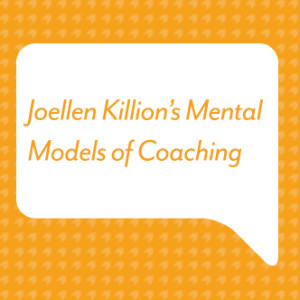
Recently a coworker introduced me to a podcast by Steve Barkley. He is an educational consultant to districts and education organizations all over the world. He also has a Professional Development website where educators can get instructional coaching micro-credentials among other PD opportunities. I have enjoyed listening to him and his guests discuss various educational topics related to instructional coaching and leadership.
When perusing some of the older podcasts he has produced I came across one that focused on mental models of adult learners. This episode featured Joellen Killion as a guest educator. She applied the mental model theory specifically to leaders in the role of coaching. This idea caused me to reflect on my practice as an instructional coach.
I first reflected on: What is my mental model of coaching and has it been effective? Ms. Killion proposed three different mental models that coaches and teachers tend to gravitate toward.
1) Headspace: These professionals tend to focus on providing logical rational steps that are organized and linear. They present steps and rational to others and believe that the rationale should be sufficient to cause a productive change in the habits of others.
2) Hand approach: These leaders believe that supporting others through doing is the key to productive change. They tend to provide examples, model lessons, and find resources to make it easier for the co-worker.
3) Heart approach: These professionals are emotion & relationship-driven. They believe that the only way to create real change is to first build trust and relationships with others.
When I began coaching my primary model was "headspace." I focused solely on coaching teachers to where they would be able to find the strategies and understand the rationale behind those strategies. I had been to many trainings on cognitive coaching and the Danielson Framework (Danielson, 2013). These various trainings had us practice how to be a sounding board to guide teachers to a set of specific steps that would improve their practice (Lipton & Wellman, 2013).
I soon began to realize that just as in the elementary classroom one style doesn't fit all for coaching. After reflecting on the efficacy of my coaching and teacher feedback after coach cycles I found that teachers feel supported in different ways and using different styles. Some teachers did not feel the time spent being coached was valuable while others appreciated the experience. A few of them asked for more resources. Others wanted more modeling do be done. While coaching can be one of the most effective ways to develop teachers (Marzano, Warrick, Rains, & Dufour, 2018), it is clear that what works well for one is not necessarily the best for all. This is not surprising given the diversity of people we just need to be mindful of this fact when working with other professionals.
After reflecting on my practice I pondered: How can I use my new knowledge of mental models to increase my coaching efficacy? Since listening to this podcast I have been more willing to move into different mental models. Before I listened to the podcast I was leery of over providing support. I was afraid that I would handicap their ability to problem solve and grow independently. After listening I realize that a balance of approaches can give the teachers what they want and provide them with the independent skills to grow professionally. I now more readily offer to model lessons and provide resources and strategies while encouraging my staff to research and self reflect on their practices. In becoming more flexible our relationships are stronger, conversations deeper, and the rate of professional growth is increasing.
As I continue to grow in this area I intend to take Ms. Killion's advice and try to ensure that my staff becomes more aware of their mental models. I want to encourage them to reflect on how they can use different mental models to assist their peers and students in becoming more effective educators and learners.
Resources
Danielson, C. (2013). The framework for teaching: Evaluation instrument (1.2). Princeton, NJ: Danielson Group.
Lipton, L., Wellman, B. M. (2013). Learning-Focused Supervision. Charlotte, VT: MiraVia, LLC.
Marzano, R. J., Warrick, P. B., Rains, C. L., & Dufour, R. (2018). Leading a high reliability school: Use data-driven instruction and collaborative teaching strategies to boost academic achievement. Bloomington, IN: Solution Tree.
Comments
Post a Comment